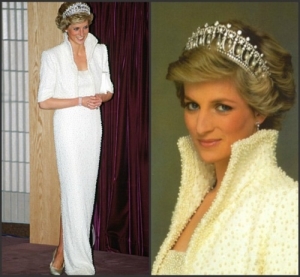The most valuable pearls appear in the wild (natural pearls), but they are rare. Since the early twentieth century cultured or farmed pearls from pearl oysters and freshwater mussels have made up the majority of pearls sold. Pearls are often used for jewellery, but in the past were also stitched onto garments in decorative patterns (pearl embroidery). Imitation pearls made from a wide variety of materials such as glass, metal, plastic, shell covered plaster and ground up shells are used for inexpensive jewellery.
See also the pearl dress of Lupita Nyong'o
Digital source of illustration
Sources:
- Humphrey, David (2012). 'Pearls', in: Gale Owen-Crocker, Elizabeth Coatsworth and Maria Hayward (eds.), Encyclopedia of Medieval Dress and Textiles of the British Isles, 450-1450, Leiden: Brill, pp. 412-413.
- Shorter Oxford English Dictionary: ‘Pearl’.
GVE

